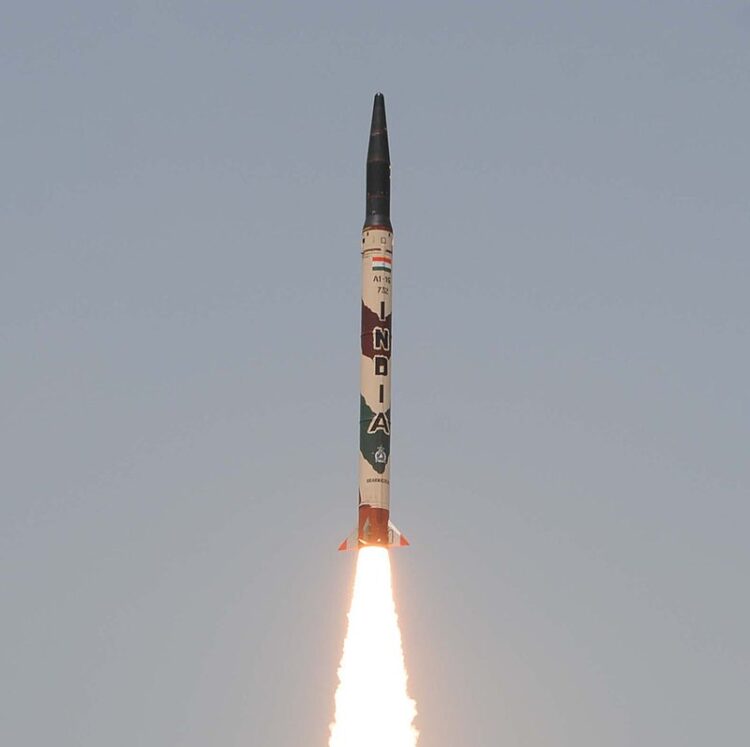On December 7, 2023, India successfully conducted the training launch of the Agni-1 missile from the APJ Abdul Kalam Island off the coast of the eastern Indian state of Odisha, a defense official familiar with the matter said.
The Training Launch
“The Agni-1 is a proven high-power precision missile system. The user training launch carried out under the aegis of the Strategic Forces Command (SFC) successfully validated all operational and technical parameters, the official said. The performance of the missile was validated by utilizing data from many tracking systems including telemetry, radar, and electro-optical systems, the official said.
These systems were deployed at different locations along the flight path including two down-range ships at the terminal point and covered the entire trajectory. A training launch is done before the induction of missiles for operational use in the military. The Training launch validates all operational and technical parameters of the missile.
Agni -1 Development
The Agni-1 originated from India’s 1983 Integrated Guided Missile Development Program which also developed the Prithvi, Nag, Aksah, and Trishul missiles. India’s Defence Research and Development Organisation (DRDO) originally envisaged a two-stage rocket, the Agni demonstrator for validating re-entry vehicle technologies. The DRDO adapted the Agni-1 from two existing boosters, a solid fuel first stage from India’s SLV-3 launch vehicle, and a modified Prithvi-1 body for the missile’s upper stage.
On May 22, 1989, an India flight tested the Agni Demonstrator for the first time. The test came as a success after two canceled launch attempts. In 1992, the DRDO tested an upgraded Agni demonstrator with a maneuvering re-entry vehicle and open interstage which eliminated the need for ullage motors from the first and second stages. The DRDO conducted a third flight demonstrator in 1994.
After conducting re-entry studies, the DRDO reconfigured the Agni Demonstrator as a single-stage ballistic missile, Agni-1 the development of Agni -1 began in 1999 and the missile underwent its first test on January 25, 2002, While the missile re-entry vehicle failed to separate, another test was conducted on January 9, 2003 and was finally successful.
The Indian Army approved the Agni-1 for full-rate production in August 2004 and accepted it into service in 2007. Since its initial deployment, the Indian Strategic Forces Command has tested the missile several times. The launches were held in 2015, 2016, 2018, 2022, and 2023.
Agni-1 Specifications
The Agni-1 is a 15m long, 1m in diameter, and has a launch weight of 12,000 kg It has a range of 700km with an estimated payload of 1000 kg. it is even capable of reaching 1200 km, which nearly encompasses all of Pakistan. It employs a one-meter diameter solid propellant booster modified by Indian Space Research Organisation (ISRO), Space Lauch Vehicle (SLV-3). The missile employs a strap-down inertial guidance system and uses thrust vectoring and control surfaces on its wing tips to maneuver.
It can be launched from rail-based platforms or transporter mobile erector launchers (TEL). The TEL called Mark-III by the DRDO, is a tractor-trailer system, employing a separate prime mover and trailer with a missile and launch arm.
Strategic Forces Command
The SFC, also called the Strategic Nuclear Command, is a component of India’s Nuclear Command Authority (NCA). It is under a military officer holding the rank of Commander-in-Chief of the rank of Air Marshal or equivalent in the Indian Armed Forces.



















Comments